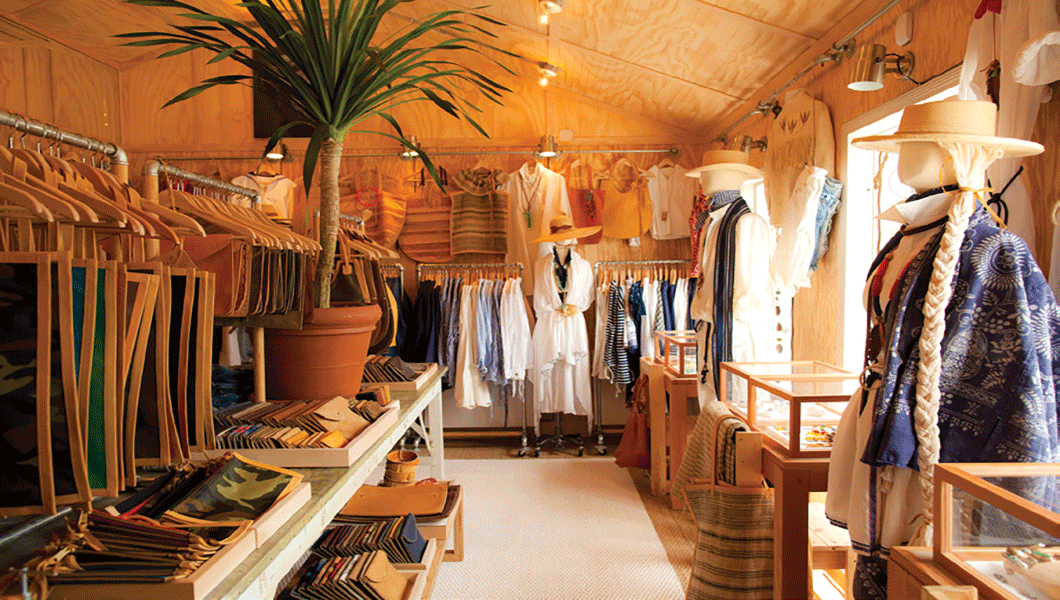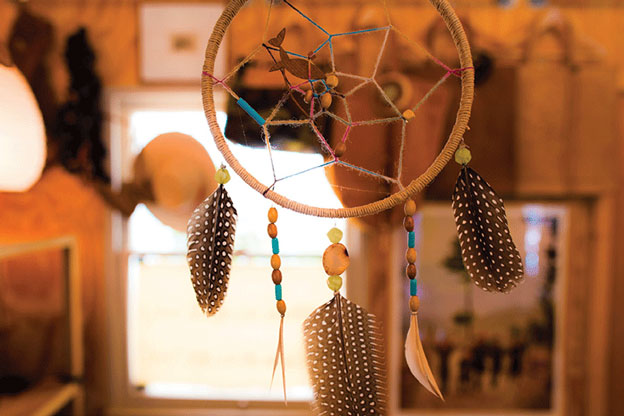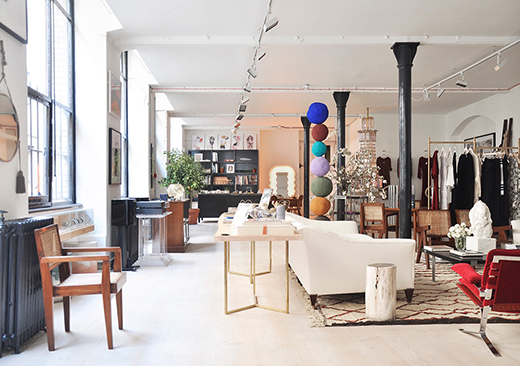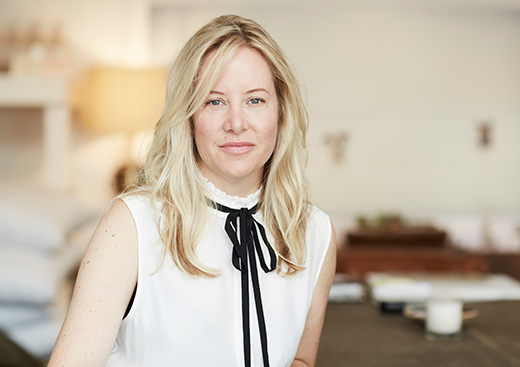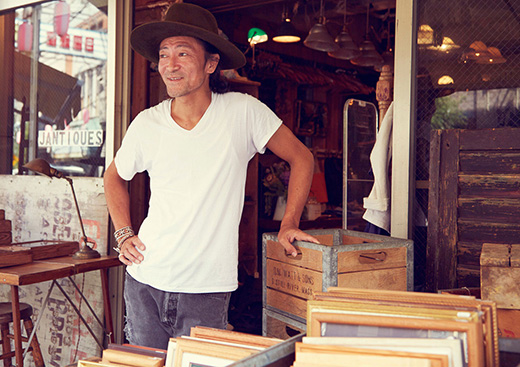It’s no surprise that Rene Holguin creates effortless, livedin designs at his West Hollywood studio and showroom, RTH, which The Los Angeles Times named one of L.A.’s best boutiques in 2012. When the former senior vice president for global creative services at LEVI’s was growing up in El Paso, Texas, his father owned cowboy boot manufacturer Laramie Boot Company. Holguin watched his dad sketch new product lines and was well versed in the western apparel market. Both parents were fashion icons for Holguin: his father for his monochromatic ensembles and tailored trousers, his mother for her turquois jewelry and bold, accessorized looks.
In high school, Holguin was already buying vintage clothes by the pound and getting them re-tailored. He later landed a job at Ralph Lauren, where he began in the outlet division before moving to home collection design. When he first came to Los Angeles in the late 1990s, Holguin bought up vintage leather jackets and used them as the material for hand-cut leather flowers. His passion for re-purposing items from the past led directly to the looks he now creates for RTH, and his leather flowers remain at the core of the line, which is all about being unique while appealing to many. “RTH, the brand, is based on personal style,” Holguin says. “It does have its own specific style, but it’s meant to be able to add on to anyone’s style or anyone’s closet.”
The RTH retail space was born of a similarly accessible philosophy, wherein function informs style. In early 2010, Holguin was looking for a new studio for his leatherworking. When he found the space he now occupies, he had two thoughts: it was adorable but needed a lot of work. Upon remodeling, he chose to draw on the existing assets of the space, which was tiny, and took much of its charm from the fact that it resembled a small house sandwiched between big, modern buildings. He liked its honest, traditional design, especially in contrast to its neighbors. Opting to play up these strengths, he aimed to create the feel of an old-fashioned souvenir shop where visitors might come to view their purchases as mementoes of their visit. Items such as handkerchiefs, traditional beaded bracelets and Holguin’s leather flowers and wallets also perfectly represent his vision for the RTH brand, which is meant to be somewhat raw, just like the space. “I didn’t want to paint it,” he says. “I didn’t want to add all of these fancy things. I didn’t want trendy lighting, or anything like that. It’s not me, and it’s also not the brand. The products themselves, all of the edges are exposed. You see the layers of leather, and the stitches. They’re not concealed or covered or anything. You see it. And so, that’s what the shop is about.”
Such elegant functionality also came into play when Holguin designed the Citizens of Humanity headquarters in West Hollywood. The office and public relations hub was intended to be warm and welcoming while also making the most of the space’s open, industrial feel and concrete floors. The aesthetic mandate Holguin received also included a mix of modern and vintage and a savvy use of color and texture. Holguin wasn’t sure at first how to preserve what was so fantastic about the space—the fact that it was big and white—while incorporating color in a positive way. Then, inspiration struck. Envisioning a 1960s Malibu vibe that would feel like the inside of a swimming pool, he painted the floor a vibrant robin’s egg blue, having used this color to great effect in the courtyard between his studio and showroom. The floor became the kind of whimsical touch that makes a design project transcendent and tied in the accent colors in the room’s throw pillows and vintage kilim rugs. “It’s such a grand gesture, but not a grand gesture that hits you in the face when you walk in,” Holguin says. “The space feels really good and comfortable, and there’s a luxurious, warm feeling in there. You want to hang out.”
Nothing in the space, or anything that Holguin designs, ever feels forced or fake. That’s important to the designer. While he believes the word “authentic,” is overused, it’s central to the philosophy behind his brand and his overall aesthetic vision. “I like it when things are genuine and honest and pure,” he says. “It could be eccentric and over-the-top, or it could be simple and basic and raw. It could be outrageously expensive, or it could be the cheapest thing. But when it’s honest, when it’s pure, when it’s genuine, it’s beautiful.”


